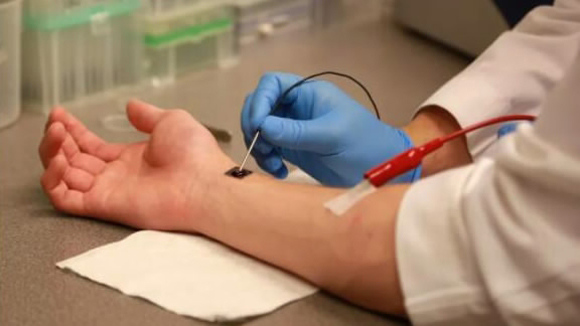
(Photo/CGTN)
Your skin is no longer just the soft outer tissue covering your body. Scientists are now able to make it a "garden" to cultivate cells needed elsewhere.
By transferring new DNA or RNA to living skin cells via a weak current with a newly-developed nanochip, researchers from the Ohio State University Wexner Medical Center can reprogram skin cells and give them a new function.
The whole process takes "just a fraction of a second."
Touching the wounded area with the chip and removing it begins the reprogramming process, said Chandan Sen, director of the Center for Regenerative Medicine and Cell-Based Therapies at Ohio State.
Sen's team has successfully created new blood vessels in injured pigs and mice with technology called Tissue Nanotransfection (TNT), according to the paper released in the journal Nature Nanotechnology.
They touched the animals' skin with the nanochip and active blood vessels grew within a week, curing their leg injuries.
Researchers also used the technology to "grow" brain cells on the skin and injected them into the mice to help them recover from brain damage.
"By using our novel nanochip technology, injured or compromised organs can be replaced," Sen said, adding that they have proved that the skin is a fertile soil which can be used to grow cells of any declining organ.
Screenshot shows transferring new DNA or RNA to living skin cells via a weak current. /The Ohio State University Wexner Medical Center Photo
This is not the first time scientists have reprogramed skin cells.
Several scientists were awarded the Nobel Prize five years ago for their research into changing skin cells into pluripotent stem cells.
This new nanochip tech has progressed further as it skips the steps to convert skill cells to stem ones, but directly changes them to the cells the body needs.
Scientists hope to apply this tech to humans in the future, enabling them to cure various diseases caused by organ or tissue failure, including Parkinson's and Alzheimer's.


















































